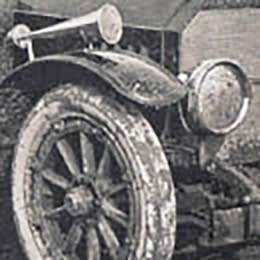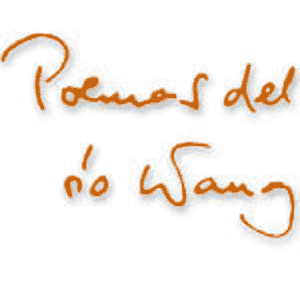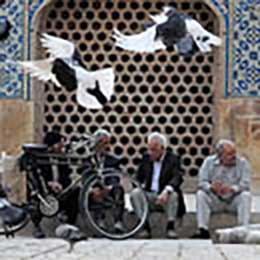 During the government of Porfirio Díaz the city become full of fancy restaurants where
During the government of Porfirio Díaz the city become full of fancy restaurants where the aristocracy had access to goods from Europe and the United States. In the
pulquerías they drank the thick pulque distillated from agave.
El Vaseo, a downtown pulquería.
He soon abandoned his initial profession of typographer and became a “news-hunting” reporter. Since the moment when for the first time a camera fell into his hands (it seems this was in 1902) he did not cease to hunt for images and to reveal the flow of history. In his own words, he became “a slave of the moment”.
 Pulquería in Tacubaya. Díaz’s repression and violent methods were especially noticeable in the villages
Pulquería in Tacubaya. Díaz’s repression and violent methods were especially noticeable in the villagesPorfirio Díaz had come to power with a coup in 1876, presenting himself as the only human being capable of bringing order to a country violent and chaotic since splitting from Spain in 1821. Since then, the presidential palace had been occupied by more than fifty governments, some of them almost of an operetta, like the eleven ones of Santa Anna. Mexico was also a country afflicted by the loss of half of its territory to the United States (1846-1848) and by the delirious act of the French of putting Duke Maximilian on the throne of an alleged Mexican Empire (one will always remember Fernando del Paso’s extraordinary novel Noticias del Imperio, 1987, recalling those years.)
 The Porfiriato wanted to create a scientific and intellectual elite. A group of politicians and astronomers analyzing the rays of sunlight from the roof of the Palacio Nacional, 1912
The Porfiriato wanted to create a scientific and intellectual elite. A group of politicians and astronomers analyzing the rays of sunlight from the roof of the Palacio Nacional, 1912The Porfiriato in which Agustín Casasola grew up involved a strong inflow of foreign capital as well as an unbearable growth of social inequalities. Any voice against injustice was silenced by force, quelling any protest with extreme brutality (they reinforced Los Rurales, a semi-military police force which was responsible for pursuing the bandits that proliferated all over the country as well as those who protested against the established order) in agreement with local despots, they developed an enormous bureaucracy, and strictly controlled the means of written communication. Not coincidentally, William Randolph Hearst owned in Mexico a ranch of an unimaginable size of 2,500,000 acres. Each time when creating a modern telecommunications infrastructure, a hydraulic system etc., Porfirio Díaz alienated the country: the United States was in possession of two thirds of the railway network. 1% of the population owned 80% of the land. Nevertheless, Mexico City lived a certain mirage of prosperity fostered by the newspapers which only gave good news about the urban middle class and the residents of the wealthy neighborhoods. Initially the Casasola brothers collaborated in those papers. Their reputation as photographers quickly grew and soon Agustín created one of the first photo agencies, the Agencia de Información Gráfica, where sometimes there worked as many as 480 photographers. His motto was: “I have or make the photo you need.” Indeed, all Mexico is there in this archive.
 General joy over the fall of Porfirio Díaz, a prelude to many years of bloodshed. The railroad employee in the lower right seems to foresee it
General joy over the fall of Porfirio Díaz, a prelude to many years of bloodshed. The railroad employee in the lower right seems to foresee itOn 20 November 1910 the shooting started. The moderate Francisco Madero, who was somewhat naive and idealistic for the task he was going to undertake, expelled Porfirio Díaz, but remained only two years in power until he was shot on the order of his friend Victoriano Huerta. There followed ten days of bloodshed in the capital, the so-called “decena trágica”. Then the revolution spread throughout the country with all those endless complications inside and among its leaders that will lead to a figure of more than one million deaths for a total population of fifteen millions. Generals Venustiano Carranza, Álvaro Obregón, Pancho Villa, Emiliano Zapata all went on parade in front of the cameras of the Casasolas. They were first more or less united to overthrow Huerta, then turned to fighting among themselves. But the Casasolas also immortalized with their cameras the anonymous citizens walking down the street, in either direction. The press all over the world demanded photos by them as reliable witnesses of the facts. But while Mexico began to respire a little bit, Europe became entangled into the carnage of the First World War. Mexico was being destroyed, but the world now had other concerns.
 The phenomenon of the soldaderas was peculiar of the Mexican Revolution. Their role went beyond the image of “adelitas” created in the course of time
The phenomenon of the soldaderas was peculiar of the Mexican Revolution. Their role went beyond the image of “adelitas” created in the course of time Soldier of the Constitutionalist Army led by Venustiano Carranza. They fought against Huerta in the north, while Emiliano Zapata led the southern rebellion, ca. 1914
Soldier of the Constitutionalist Army led by Venustiano Carranza. They fought against Huerta in the north, while Emiliano Zapata led the southern rebellion, ca. 1914 Zapatista peasants who have entered Mexico City in December 1914. Breakfast at the famous Sanborns restaurant. They had the revolutionary habit of paying for breakfast
Zapatista peasants who have entered Mexico City in December 1914. Breakfast at the famous Sanborns restaurant. They had the revolutionary habit of paying for breakfastThe Casasolas were also witnesses to the recovery of Mexico and the conversion of Mexico City into a great modern metropolis. Thus, the city was again their favorite topic, the streets that were flooded by an uncontrolled traffic of cars (20,000 cars per 500,000 inhabitants in 1925). There was peace, and with the peace also a certain prosperity, only threatened by immigration from the countryside to the city. The camera of the Casasolas now explored the night, they tarried in the police stations and courts, in the theaters, cabarets, and wrestling rings, in the poorly lit alleys.
 Peace brings the proliferation of all types of trades. A balloon-seller (and the shadow of the photographer)
Peace brings the proliferation of all types of trades. A balloon-seller (and the shadow of the photographer) Amateur wrestlers. In Mexico, the love of wrestling has been very popular since these years. Mexico City, ca. 1925
Amateur wrestlers. In Mexico, the love of wrestling has been very popular since these years. Mexico City, ca. 1925 Newspaper vendors, known as “voceadores” (“hawkers”) pick up the ware to sell on the streets. See the headline in El Demócrata: “El canto de la ciudad alegre” – “The song of the happy city”, ca. 1925
Newspaper vendors, known as “voceadores” (“hawkers”) pick up the ware to sell on the streets. See the headline in El Demócrata: “El canto de la ciudad alegre” – “The song of the happy city”, ca. 1925 Many children work hard in Mexico City. They were known as “mecapaleros” by the type of belt with two ropes and a headband with which they loaded packages
Many children work hard in Mexico City. They were known as “mecapaleros” by the type of belt with two ropes and a headband with which they loaded packages The painter Diego Rivera leads the funeral procession for Antonio Mella, assassinated while
The painter Diego Rivera leads the funeral procession for Antonio Mella, assassinated while going home with Tina Modotti, who was accused as the main suspect, but by the
intervention of Rivera she was acquitted and the Cuban dictator Gerardo
Machado was accused with the crime instead. Tina Modotti was
active in Spain as a Stalinist agitator and died in a taxi
in Mexico when after 20 years she returned home.
The 1920s were the years of a certain
revolutionary bohemianism
and glamour. 1929
 Mexican nightlife found its expression in the theaters Colón, Principal, Arbeu, María Guerrero and Esperanza Iris. Mexico City, ca. 1925
Mexican nightlife found its expression in the theaters Colón, Principal, Arbeu, María Guerrero and Esperanza Iris. Mexico City, ca. 1925 A couple who changed their clothes dawns in the police station and are ridiculed. Mexico City, ca. 1935
A couple who changed their clothes dawns in the police station and are ridiculed. Mexico City, ca. 1935 Physiognomic study of delinquents in the Laboratory of Criminal Investigation and Identification. Mexico City, ca. 1935
Physiognomic study of delinquents in the Laboratory of Criminal Investigation and Identification. Mexico City, ca. 1935 Investigators at the home of La Cinta Aznar, killed by Gallegos. One of the most notorious crimes of the period. Mexico City, ca. 1920
Investigators at the home of La Cinta Aznar, killed by Gallegos. One of the most notorious crimes of the period. Mexico City, ca. 1920Agustín Casasola, who no doubt was aware of the recent development of the photographic art and must have known the combative use of photography since the examples of Eugene Atget in Paris in 1895, or Jacob Riis’ How Other Half Lives (1890) of New York, never claimed that his work was art or that it had any value of social intervention. It was life at the moment it crossed the field of vision of his camera – and also a way to earn his life. Nevertheless he was an excellent artist who has defined Mexican photography since its origins. We recently saw a major retrospective exhibition of Graciela Itúrbide and we could realize her great debt to the documentarism of the Casasola brothers.
 Life in the Mexican countryside, marked by harshness and neglect. A tlachiquero extracting mead. D.F. Mexico, ca. 1910
Life in the Mexican countryside, marked by harshness and neglect. A tlachiquero extracting mead. D.F. Mexico, ca. 1910Lila Downs, «El relámpago». From the CD: La cantina.












































































































Add comment